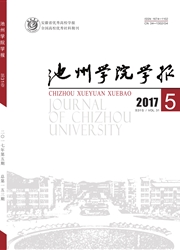

 中文摘要:
中文摘要:
选取2000—2014年中国四大地区及其省域的城镇常住人口占总人口比重和二三产业增加值占地区生产总值比重作为人口和产业城镇化扩张指标,通过运用相关软件和构建耦合协调模型,对中国四大地区及其省域的“人口-产业”城镇化耦合协调时空演化进行系统研究.研究显示:1)中国及四大地区城镇化耦合度和耦合协调度呈整体上升趋势,但各地区间差异依然存在,其空间分布格局整体呈现为:东、东北地区〉中部地区〉西部地区.2)中国各省城“人口-产业”城镇化耦合指数和耦合协调指教整体呈上升趋势.在空间布局上:一方面,省域耦合度空间趋于一体化;另一方面,耦合协调的省份逐渐增多,且其总体呈现东高西低的分布态势.
 英文摘要:
英文摘要:
Under the background of the "new normal" and urbanization as to maintain the Select 2000--2014 China's four regions and provinces of the resident population of the resident population of the total population and the proportion of the two or three industrial added value accounted for the proportion of GDP as the population and industrial expansion index, by using the related software and constructing the coupling coordination model. Systematic study on the spatial and temporal evolution of the coupling coordination of "population and industry" in the four regions and provinces of China. Research shows: 1) The coupling degree and coupling coordination degree of urbanization in China and the four regions of China showed an overall upward trend, but the regional differences still existed, and the spatial distribution pattern of the whole region was as follows: East, northeast region, central region and western region. 2) China Provincial Industrial and population urbanization index of coupling and coupling coordination index showed an overall upward trend. In the space layout: on the one hand, provincial coupling space tends to integration; on the other hand, the coupling coordination provinces gradually increased and the overall presented high East and low in the West in the distribution trend.
 同期刊论文项目
同期刊论文项目
 同项目期刊论文
同项目期刊论文
 期刊信息
期刊信息
